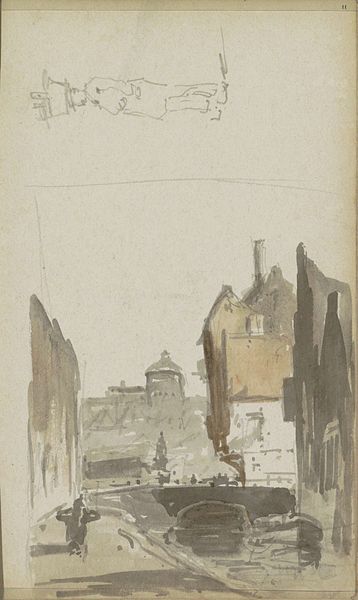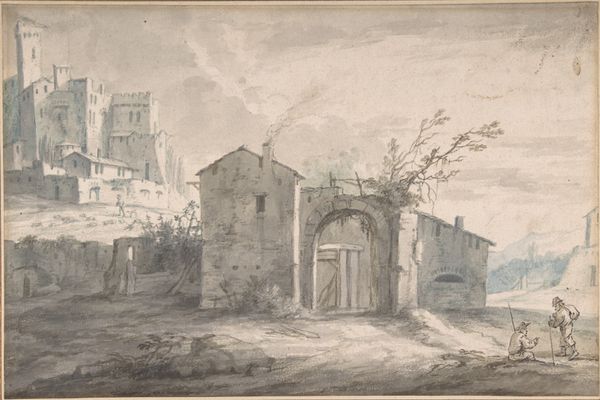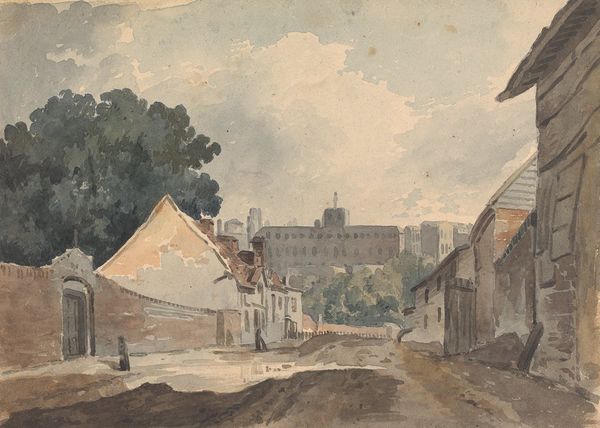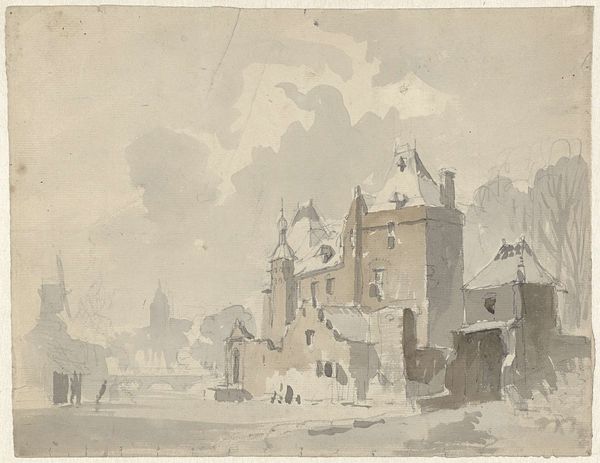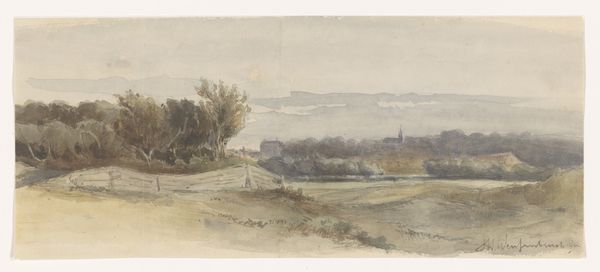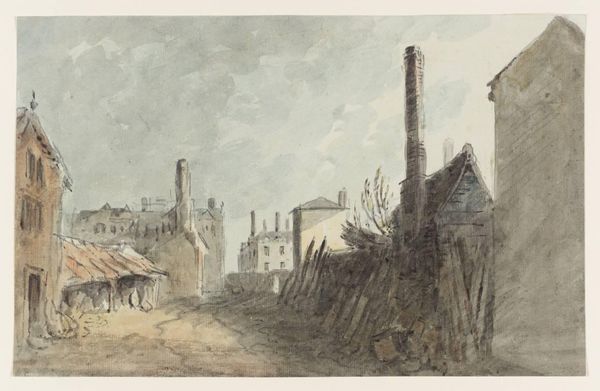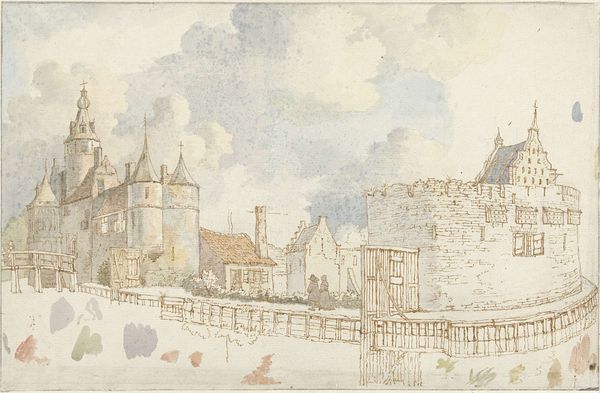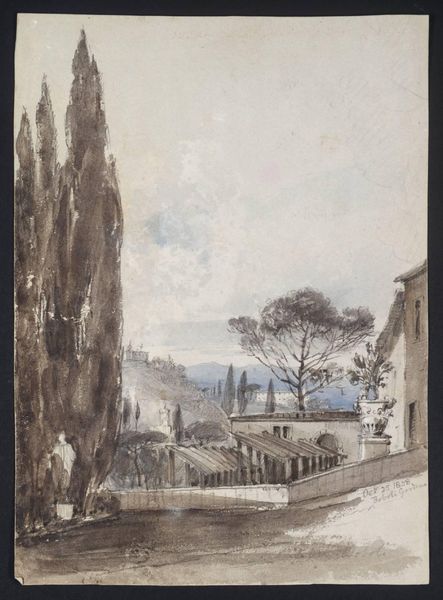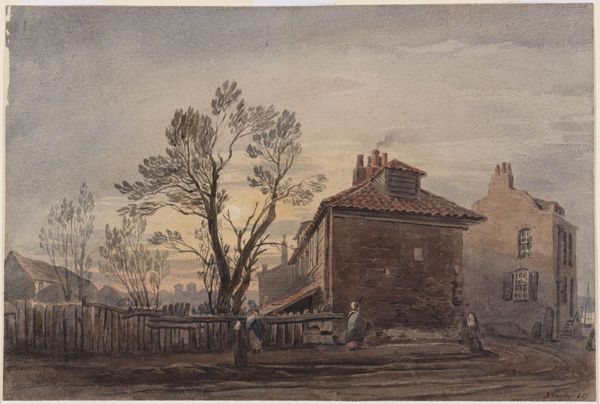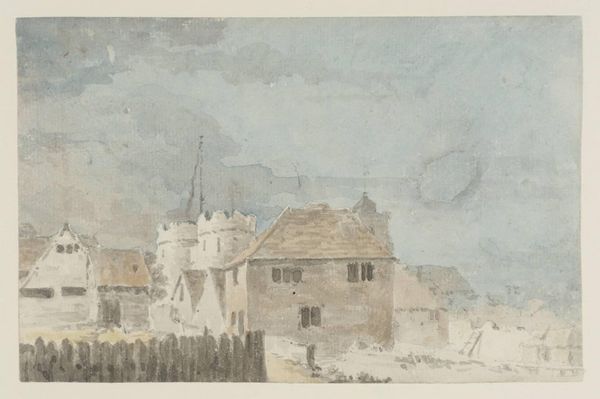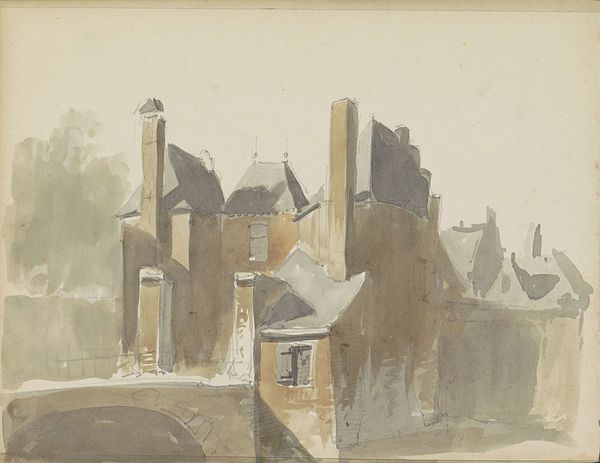
#
amateur sketch
#
toned paper
#
incomplete sketchy
#
landscape
#
possibly oil pastel
#
oil painting
#
coloured pencil
#
underpainting
#
watercolour illustration
#
mixed medium
#
watercolor
Copyright: Public Domain: Artvee
Curator: Sobering. Bleak, almost. It feels like looking at the tail end of an era, the way the soft grays and browns wash over the scene. Editor: Here we have Thomas Sully's "City Scene with Buildings," an understated yet evocative watercolor work. It is interesting to note that Sully, celebrated as a portraitist, chose such a muted palette for an urban sketch. Curator: Muted is the word. It's the kind of palette that speaks of industrial skies, of social divisions calcified into architecture, even if we're just talking rooftops and chimneys here. Do you get that weight too? It speaks of early industrial alienation, doesn't it? Editor: Absolutely. Think about what those buildings represented during Sully's time – power structures, class divides etched into the landscape itself. Notice how the rooftops seem to press against a heavy sky? I wonder, does this sketch present the social conditions visible in Philadelphia, Sully’s location for the bulk of his career? Curator: It does echo the changing skies reflected in William Blake’s poems about “dark satanic mills” emerging from Britain, doesn't it? There is a certain heaviness that can be aligned with broader cultural memory. In many ways, watercolor as a medium allows for a kind of transparency; it’s a looking through to somewhere beyond the mere depiction. Editor: Exactly. It invites us to consider not just what we see, but what that implies about societal realities. The medium mirrors a kind of "looking through" to reveal what hides behind brick and stone. The city, so to speak, as a site of labor exploitation and inequality. It makes one ponder whose perspective we are granted in urban sketches: Is it of the residents or observers? Curator: Or of both! It speaks, at its core, of impermanence, the way a society leaves an imprint on its geography but is itself just a transient occupant, subject to inevitable winds of change. Editor: Yes. In the end, it prompts a deeper conversation about representation and its ability to reveal complex narratives embedded in something as simple as a cityscape. Curator: Beautifully said. I think this small, evocative sketch contains far more depth than it first appears to reveal.
Comments
No comments
Be the first to comment and join the conversation on the ultimate creative platform.

